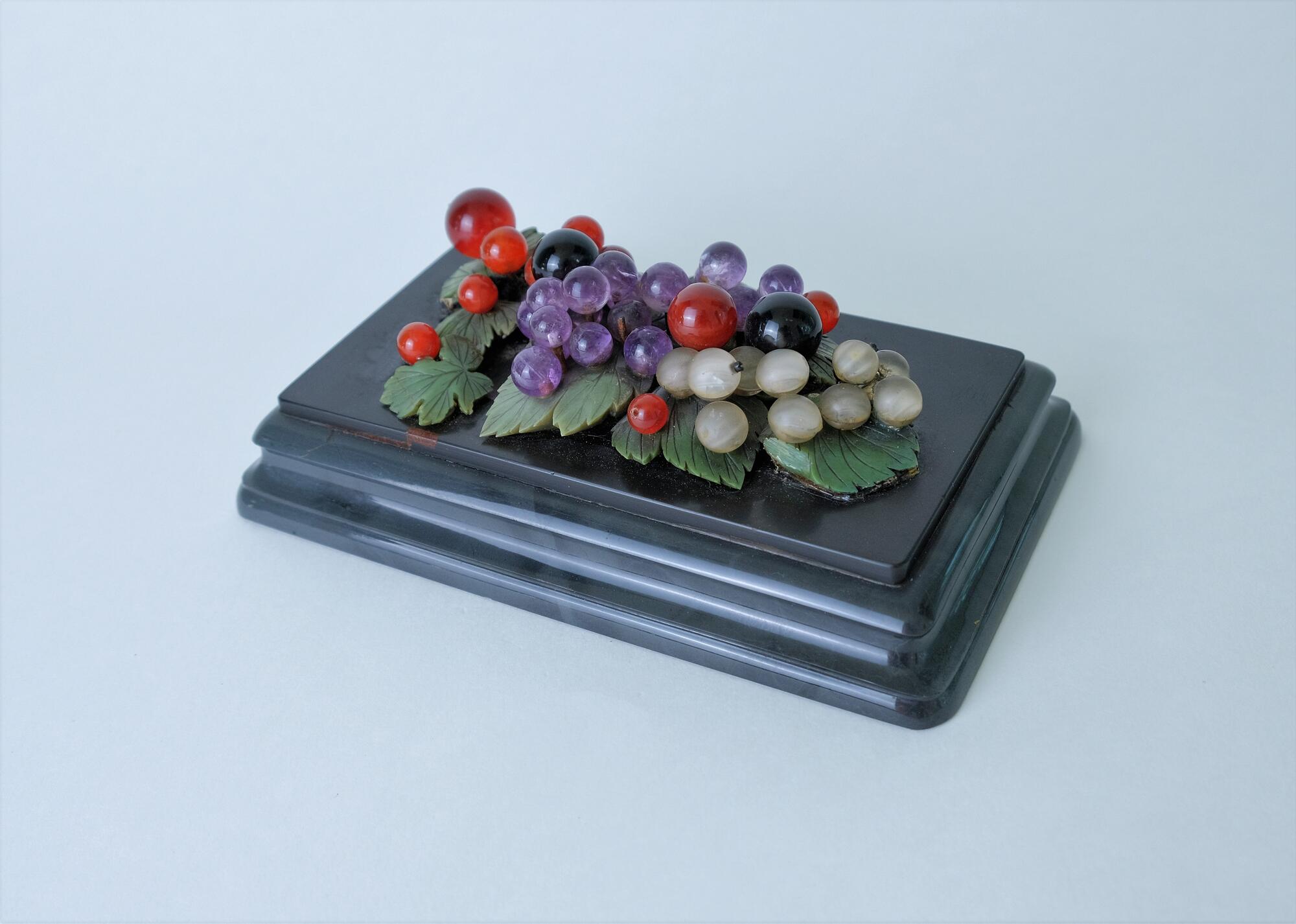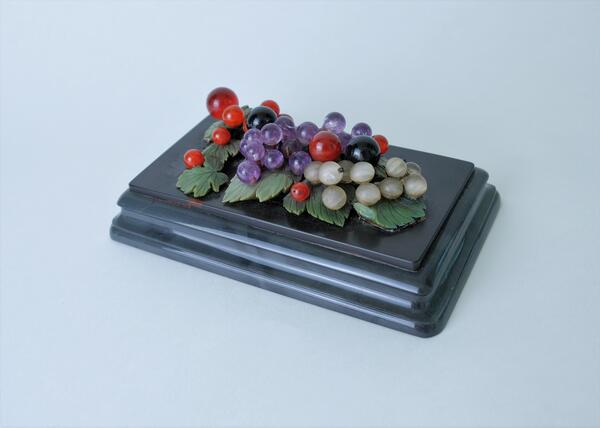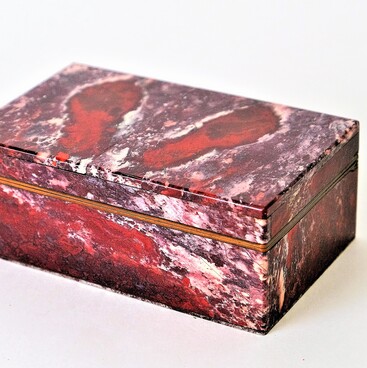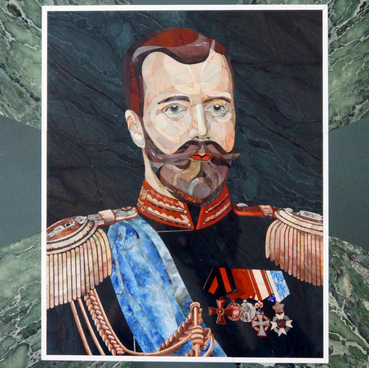Paperweight “Berries” was created in the technique of volumetric mosaic at the Yekaterinburg Imperial Lapidary Factory in the 19th century. A flat stone overlay was placed on a rectangular base made of Kalkan jasper. This overlay served as a background for the composition: round multicolored berries framed by carved leaves.
Ural masters considered volumetric mosaic to be one of the most difficult techniques. Each detail was carved separately from an ornamental or precious stone, polished, and then the fragments were combined and arranged into a composition. This technique was brought to Russia from Florence: Italian carvers have been creating sculptures of saints and stone still lifes for several centuries.
Ural craftsmen mastered this method in the 19th century, when the assistant director of the Yekaterinburg Lapidary Factory, Alexander Lyutin, ordered several samples from Florence — a paperweight with images of fruits and birds. Such items can be created in two distinct styles. One of them was closer to the European style: stonecutters decorated their products with vines and clusters of amethyst berries. The other was developed exclusively by Ural masters. The main decoration, in this case, was the images of local berries: raspberries, currants, cloudberries, less often — gooseberries. Usually they were placed on a stone base with a small hill.
By the 1860s, paperweights made in the volumetric mosaic technique were very popular throughout Russia. In Yekaterinburg, they were made not only by factory craftsmen but also by stonecutters-artisans. The price of one product could reach up to 500 rubles, while a smooth jasper paperweight without an overlay cost only about five rubles.
The stone berries of Ural masters became so famous that Pavel Bazhov dedicated one of his fairy tales “A Fragile Twig” to this art. His character, the son of famous master Danila, learned to carve miniature sprigs of gooseberries, cherries, and currants from ornamental stone.
Ural masters considered volumetric mosaic to be one of the most difficult techniques. Each detail was carved separately from an ornamental or precious stone, polished, and then the fragments were combined and arranged into a composition. This technique was brought to Russia from Florence: Italian carvers have been creating sculptures of saints and stone still lifes for several centuries.
Ural craftsmen mastered this method in the 19th century, when the assistant director of the Yekaterinburg Lapidary Factory, Alexander Lyutin, ordered several samples from Florence — a paperweight with images of fruits and birds. Such items can be created in two distinct styles. One of them was closer to the European style: stonecutters decorated their products with vines and clusters of amethyst berries. The other was developed exclusively by Ural masters. The main decoration, in this case, was the images of local berries: raspberries, currants, cloudberries, less often — gooseberries. Usually they were placed on a stone base with a small hill.
By the 1860s, paperweights made in the volumetric mosaic technique were very popular throughout Russia. In Yekaterinburg, they were made not only by factory craftsmen but also by stonecutters-artisans. The price of one product could reach up to 500 rubles, while a smooth jasper paperweight without an overlay cost only about five rubles.
The stone berries of Ural masters became so famous that Pavel Bazhov dedicated one of his fairy tales “A Fragile Twig” to this art. His character, the son of famous master Danila, learned to carve miniature sprigs of gooseberries, cherries, and currants from ornamental stone.



